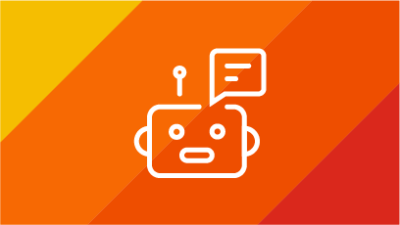Accessibility Resources
Breadcrumb
- RIT/
- Center for Teaching and Learning/
- Teaching/
- Accessibility
RIT is committed to providing an inclusive learning environment for all students. All materials used by RIT when providing its programs and services must be accessible to individuals with disabilities. Accessible course materials benefit all learners, in addition to those with disclosed disabilities.
What does it mean to be accessible?
Within the context of teaching and learning, instructors have a responsibility to proactively create course content in a way that removes potential barriers for students with disabilities and those using assistive technologies. Instructors can also foster communication early on so that students with disabilities are encouraged to inform them of any special needs and seek accommodations by working with the Disability Services Office and the instructor before the course gets fully underway.
Creating Accessible Course Materials
- Use the accessibility checkers in content authoring tools such as the Ally integration in myCourses and the features in Microsoft office products. These tools check content based on industry-standard accessibility guidelines (e.g. Web Content Accessibility Guidelines) as well as other usability best practices.
- Videos that have an audio component must be captioned. Review Course Video Captioning for details on captioning.
- The Statement on Academic Accommodations is required in your syllabus. RIT Accommodation Policy Statement.
For more information on creating accessible course materials, review the CTL’s curated list of accessibility resources.
What support services do students have at RIT?
The Disability Services Office at RIT provides information on who they support at RIT. RIT students seeking assistance through DSO bring their own unique experiences that help shape how both Disability Services and faculty can work with them to address their special needs and access considerations.
The Department of Access Services provides interpreting, notetaking, and real-time captioning services to the RIT community. Their goal is to provide the highest possible quality of access to communication.
The Spectrum Support Program provides innovative supports that positively impact the college experience for RIT students, particularly those with autism spectrum disorders. They are committed to helping students build the connections to RIT that will assist them in achieving academic, social and career success.
What access challenges might students face in a course?
There are some access considerations specific to online course delivery in which all or some content and interaction takes place through computer-mediated tools. The DO-IT Center on Accessible Distance Learning, based out of the University of Washington, provides several examples of access challenges students might face in an online learning course:
Vision
A student who is blind or has low vision may rely on software that converts content from text to speech or that enlarges screen images. Online websites and documents with text and images that are not formatted properly will not work with these softwares. Another consideration is if live text chats are planned, choosing a chat tool that is compatible with screen readers will be needed for a student to participate.
Hearing
A student who is deaf or hard of hearing may rely on captions and text transcriptions for audio and video content. This is the case for both recorded and real-time delivery. Impromptu audio or video recordings as a means for content delivery are not immediately accessible to students who must then wait for captioning to be added, after the fact. Pre-recorded materials can be captioned through Media Services prior to being made available to students. In relation to synchronous interactions, unless the student is provided the schedule in advance for live, online activities they may not be able to arrange for a real-time captionist through Access Services in time for the sessions.
Learning Disability
A student with a specific learning disability that impacts their ability to read, write, or process information may seek content in digital form to be read with screen readers or reading software programs. In some situations, they may also use speech-to-text software or screen-enlargement programs. Live, online interactions may be difficult to follow and participate in since there is less time to process information. Offering asynchronous methods of interaction can be a more accessible way for some students to participate in discussions or activities because there is more time to read and think through a response.
Mobility
A student with a limited range of mobility or no functional use of their hands may rely on alternative keyboards, speech inputs, and other devices to obtain access to online course materials, software, or internet-based navigational tools. Certain software programs may not be accessible if they do not have keyboard command alternatives. Some students may not have the fine motor skills needed to select small buttons. Or, students whose input methods are slow may not be able to participate as well in real-time chats or web conferencing.
Resources for Teaching Deaf and Hard-of-hearing Students
DeafPlus provides online resources for deaf and hard-of-hearing students with additional disabilities as well as for the faculty and staff who work with them.
Teach2Connect provides instructors with classroom teaching strategies that foster collaborative learning among deaf, hard-of-hearing, and hearing students. Additionally, it assists faculty in finding answers to questions about working with deaf and hard-of-hearing students.
The RIT American Sign Language & Deaf Studies Community Center offers classroom tips, a Deaf culture tip sheet, and other resources for faculty.
DeafTEC provides strategies, teaching tools, and other information to improve access to learning for deaf and hard-of-hearing students in postsecondary classrooms.






